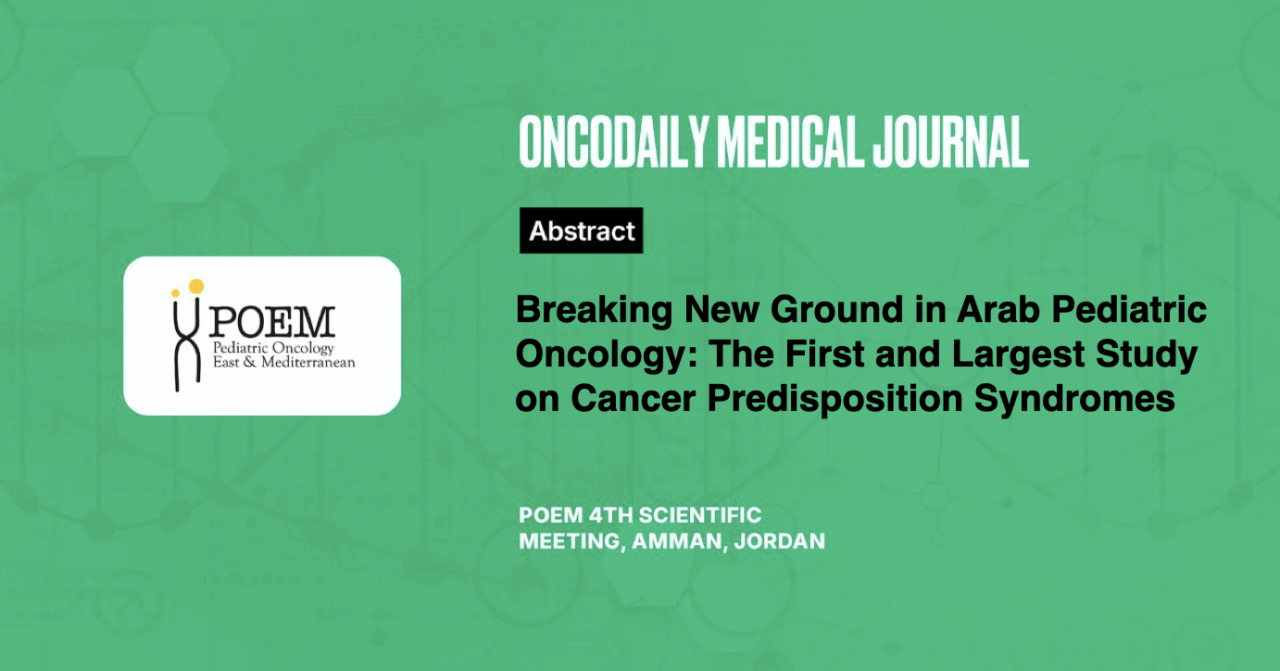Breaking New Ground in Arab Pediatric Oncology: The First and Largest Study on Cancer Predisposition Syndromes
Abstract
Introduction: Cancer predisposition syndromes (CPSs) are identified in approximately 8%–10% of children with cancer. We aimed to investigate genetic cancer predisposition in pediatric patients treated at the King Hussein Cancer Center (KHCC).
Methodology: This retrospective review examined patients referred to the CPS clinic, established in January 2020. Screening for CPS was conducted using the Jongmans and McGill Interactive Pediatric OncoGenetic Guidelines (MIPOGG). Next-generation sequencing (NGS) of germline DNA was performed, targeting gene panels relevant to patients’ diagnoses and family histories.
Results: A total of 275 Arab patients under 18 years old were screened. Most met Jongmans and/or MIPOGG criteria for CPS, with 169 patients (61%) presenting with CPS-associated neoplasms, including adrenocortical carcinoma, atypical teratoid rhabdoid tumor (ATRT), hypodiploid acute lymphoblastic leukemia (ALL), and retinoblastoma. A family history of cancer was noted in 45% of patients, congenital or other phenotypic anomalies in 11, and dual malignancies in 12. Excessive treatment toxicity was reported in 10 patients. Primary cancers included hematologic malignancies (n = 60), brain tumors (n = 63), solid tumors (n = 150), and Langerhans cell histiocytosis (LCH; n = 2).
Pathogenic/likely pathogenic (P/LP) germline mutations were identified in 106 patients (38.5%) across several CPS genes, including ATM, ALOX12B, BRCA2, CHEK2, DCLRE1C, DICER1, EPCAM, FANCA, GATA2, MSH6, TP53, and WT1. Variants of uncertain significance (VUS) were found in 78 patients (28.3%), with prioritized VUS detected in 24. Negative testing was reported in 87 patients (33%) who exhibited clinical CPS features.
Conclusion: Targeted screening identified a significant prevalence of CPS among our patients. Future refinements, such as whole-exome sequencing (WES) to capture structural variants and collaborations for functional testing of VUS, could enhance detection. Key challenges in genetic counseling included extended family testing and recommending surveillance for affected relatives.





